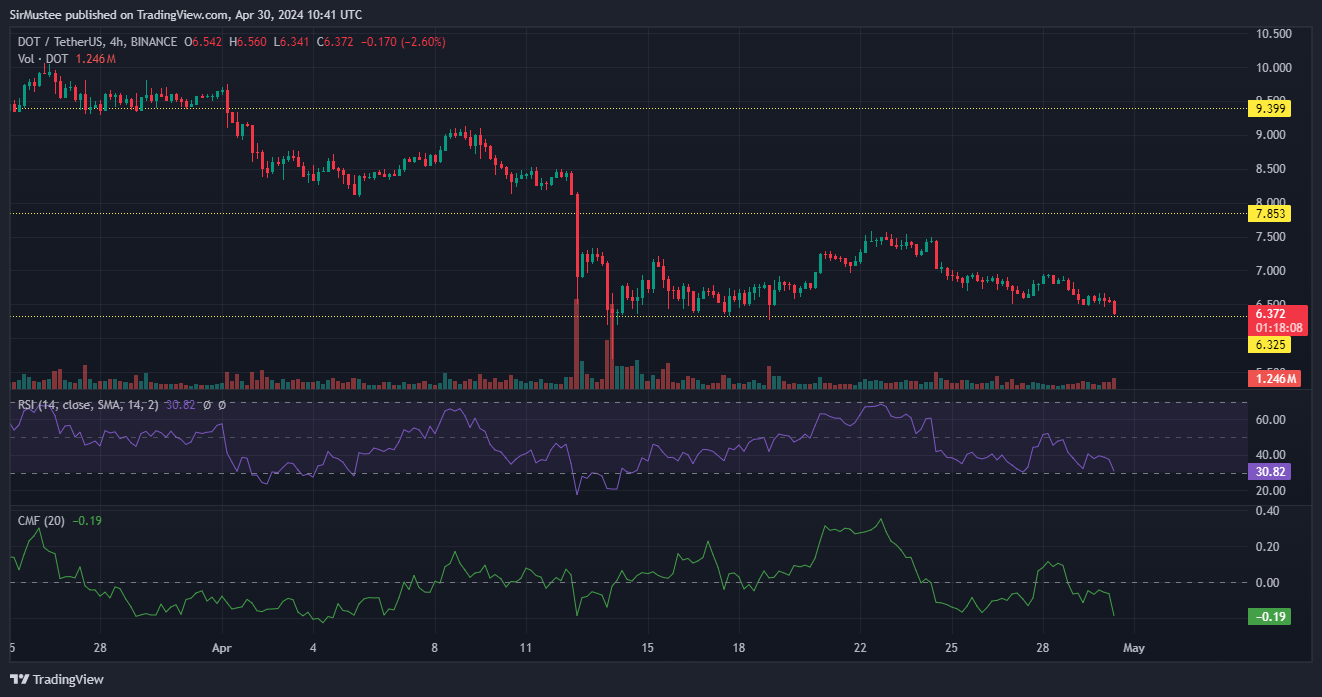Table of Contents
Polkadot (DOT) extended its range bound movement, as it price sank to the range low of $6.32 for the fourth time in April. Earlier in April, DOT had looked to push on from the $6.32 support level but failed to breach the price resistance at the $7.5 price area.
This led to a slow dip for DOT with the bearish pressure in the market accelerating the selling pressure. With multiple indicators flashing more bearish signals, DOT sellers could break the bullish defense at the key support level.
Sellers Look to Close Below $6.3

Zooming out to the higher timeframe (daily), it showed that the $6.3 support level has been vital for buyers. The buying strength at the level has held firm on multiple occasions with sellers unable to break below the level.
However, the selling pressure on DOT coupled with the overall bearish sentiment in the market could give sellers an advantage.
A look at the Chaikin Money Flow (CMF) on the four-hour timeframe noted strong capital outflows with a reading of -0.19. In similar fashion, the Relative Strength Index (RSI) stood at the edge of the oversold zone, denoting heavy selling pressure.
Both indicators were heavily bearish on the lower timeframe and could yield short term opportunities for sellers.
A full bearish candle close on the four-hour timeframe below $6.3 would serve as a short signal with target levels at $4.5 to $5. The likelihood of the support level caving is high, as every test of a support/resistance level weakens the buy/sell strength at the level.
Sellers on Top in the Futures Market

Data from Coinglass showed that short positions were in the majority with 51.36% of the current futures contracts. This translated to a $4.07 million difference between long and short positions.
Thus, traders in the spot and futures market can leverage the current bearish sentiment for selling positions in the short to medium term.
Disclaimer: This article does not constitute trading, investment, financial, or other types of advice. It is solely the writer’s opinion. Please conduct your due diligence before making any trading or investment decisions.










